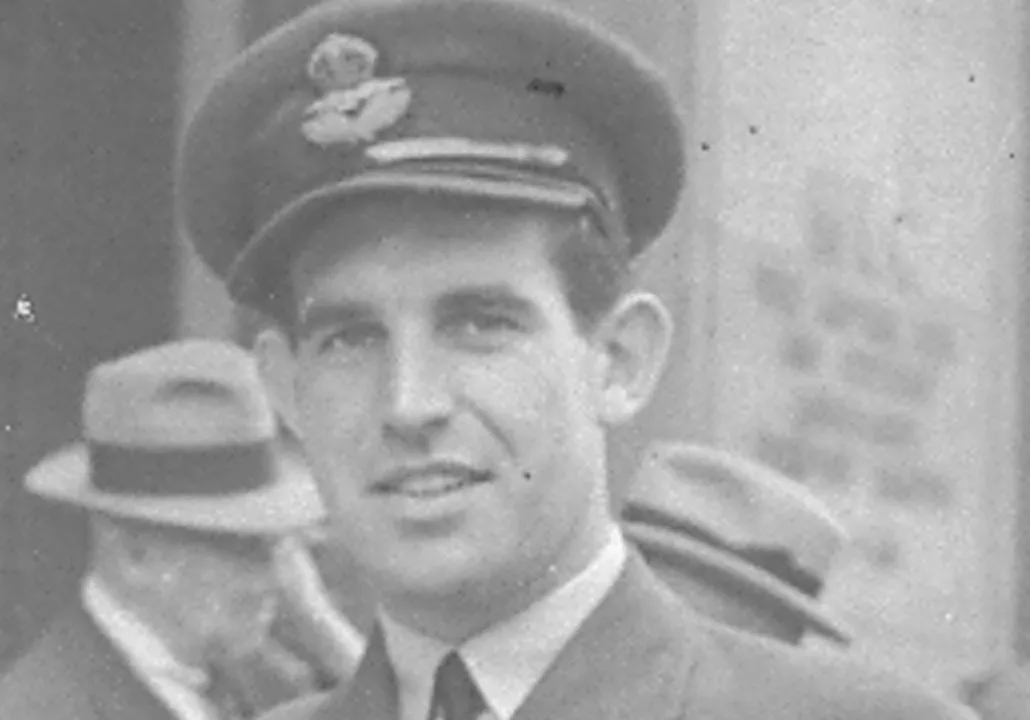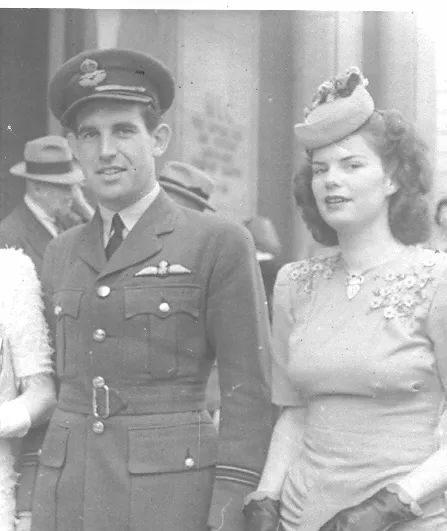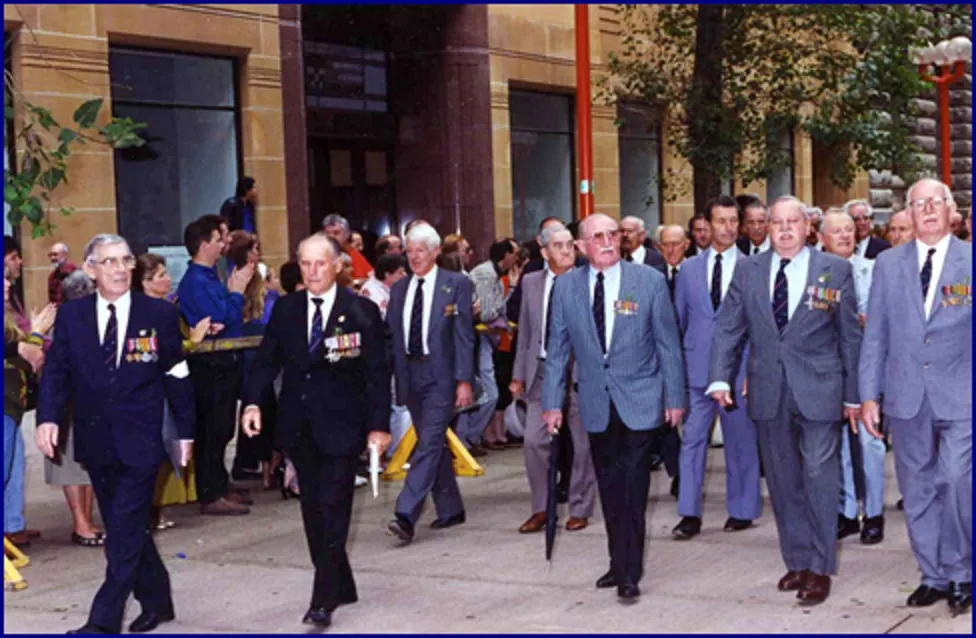FLTLT Charles Walter Hack 136816



| Squadron/s | 54 SQN RAF |
| Rank On Discharge/Death | Flight Lieutenant (FLTLT) |
| Nickname | Bewick |
| Date of Birth | 26 Oct 1919 |
| Date of Death | 20 Jun 2008 |
| Contributing Author/s | Robert Hamilton Reviewed by Vince Conant, Mar 2014 The Spitfire Association |
Charles Walter Bewick Hack was known to many of his friends as Bewick (pronounced Buick). Bewick is a family name and Thomas Bewick, a famous English wood engraver in the late 1800s was a distant relative.
Bewick was born in Salisbury, Wiltshire, England on 26th October 1919. His father was an Infantry Major in the British Army. His father had fought with British troops alongside Australian troops in Palestine and later in the Battle of the Somme.
Bewick attended his father's old public school, Oakham. Oakham School was then a boys' school, founded in 1584, but it is now coeducational and its Rugby and Basketball teams visited Australia in August 2008. Bewick required some tutoring to complete his studies. However in the school cadets he did well rising to the rank of Sergeant.
On completing his school studies Bewick joined an Officer Cadet Training Unit at Colchester and after 6 months graduated as a Second Lieutenant in the Royal Fusiliers. His report on graduation stated "of a quick disposition but has brains and commonsense".
Bewick wanted to fly planes and shortly after his posting to the Fusiliers he was granted a transfer to Cranwell to join the Royal Air Force and learn to fly. Bewick's father was a committed Army officer who, being a Chartered Accountant transferred to the Royal Army Pay Corps between the two wars eventually retiring as a Lieutenant Colonel and Chief Paymaster of Southern Command. During World War 2 like a number of retired officers he forwent his commission and joined the Home Guard. Lt Col Walter Stanley Hack was initially disappointed when he found out that his son Bewick was forsaking an Army career to join this newly formed Air Force.
However, Bewick was soon learning to fly Tiger Moths and Oxfords. Eventually he graduated to Spitfires. A couple of these training sessions were gate crashed by German fighters (ME109s) flying over from the continent, which could be quite terrifying for pilots under instruction!
After completing his flying training Bewick was then posted to Air Gunnery School for further training as a fighter pilot. Completing this training he was posted to 54 Spitfire Squadron.
Following the Japanese's attack on Darwin, The Australian Prime Minister John Curtin requested additional air support from Britain and 54 Squadron found itself in Australia and under command of the 1st Fighter Wing of the Royal Australian Air Force in Darwin.
The Spitfires were effective in keeping the Japanese air force from any further assaults on Darwin. Eventually the only action being undertaken was sorties over Japanese positions on Timor.
During his posting in Darwin Bewick had the occasional leave visiting Sydney where he met his future wife, Dawn McKerihan. They were married in February 1945.
Later that year, with the War over, Bewick, with his young wife, was repatriated back to England. He held the rank of Flight Lieutenant and was posted to a RAF unit as Adjutant for a short while before being demobbed.
He became articled to study property valuation and on completion of those studies worked in the real estate industry until 1954. During that time Bewick and Dawn had three children, Ronald, Yvonne and Murray.
Just like jumping out of the Army into being an Air Force pilot, Bewick was soon attracted to something a little more exciting than real estate. He received a job offer to work at Pagewood Film Studios in Sydney and so in 1954 the family migrated to Australia.
In Australia the family grew with three more children, Cheryl and then twins, Daphne and Adrian. Initially living in the Sydney suburb of Rose Bay the family then moved to a larger home in Vaucluse.
On arriving in Sydney at the end of 1954, Bewick worked for the next 30 years in the film industry until he finally retired. During that period Bewick worked for a number of independent film companies including: Pagewood Film Studios, Sound International, Visaton Studios, Supreme Sound Studios, Porters Film Academy and Australian Film Productions. Many of these companies merged or closed down.
Bewick's initial training in the industry included both film production and film direction but he eventually specialised in the production area. Initially he produced a number of commercials for the budding television industry. He was an assistant Producer for a number of classic Australian feature Movies including Treasure Island with Robert Newton, Smiley and Smiley Gets a Gun bringing fame to Australian actors like Chips Rafferty. Treasure Island was followed up with a TV series called Long John Silver, also starring Robert Newton.
Music clips were also produced for early singers such as Johnny Farnham and Little Pattie (Patricia Amphlet). However Bewick moved on to specialise in documentaries.
Bewick made documentaries for the Department of Defence on the Jindivic, a pilotless aircraft, and the Ikara missile. Two years in a row he received Australian Film awards for leading documentaries, one being a documentary on the Royal Life Saving Society and the other on the unity and impending independence of Papua New Guinea.
He also gained a gold medal in the USA for the best industrial film titled, "The Story of Broken Hill". His final significant work was Katch Kandy, a TV series of runaway children based around the Taronga Park Zoo area of Sydney. Written over 26 episodes these were shown on Australian TV successfully as a children's adventure series with a repeat screening. It was also shown on USA circuit television.
During his later years in the film industry Bewick joined a number of ex service associations. These included the RAF Association Sydney Branch, The Spitfire Association and the Royal Australian Air Force Association.
He became Treasurer of the Air Force Club, Sydney in the 80s into the early 90s. This was a licensed recreational club based in the Central Business District.
As a member of the Spitfire Association he was involved with their Committee in the 90s. In fact he became their President from 1995 to 1997. In later years he was made a Life member of that Association.
In the Royal Australian Air Force Association (RAAFA) he was the State Treasurer and a Federal Councilor for many years. He provided a lot of support to the State President and represented the Association on many working groups and delegations with the Department of Veteran Affairs review committees and councils and on numerous projects. Every year he directed the Annual Fund Raising Raffle and he was involved in organizing the Government sponsored 50 year celebrations of the end of World War 11.
His crowning achievement with his organizing abilities was probably the two major fund raising concerts held in subsequent years where he used his film production experience to make the concerts successful. The concerts not only raised funds for the Association but also raised the profile of the Association in the eyes of the community. The concerts were held in the Sydney Opera House and involved a number of famous entertainers, Opera singers and Air Force Bands. The Governor General was one of many high profiled people who attended.
In 1990 the Federal Executive of the RAAFA awarded Bewick Life Membership of the Association and in 2001 the State Council of the RAAFA appointed him Life Vice President, one of the highest accolades they can bestow on a member.
Also in 2001 Bewick retired from active work with the ex service associations enjoying his remaining years at Leisure Lea Retirement Village in Ryde. Failing health in his last nine months didn't change his demeanor and his optimism. He remained in good spirits even in hostel care during that period.
Charles Walter Bewick Hack passed away on 20th June 2008 and is survived by his wife, Dawn, all his six children (and four spouses) and ten grandchildren. He was 88 years old.

